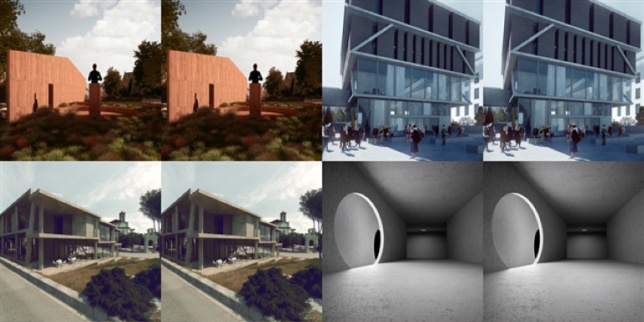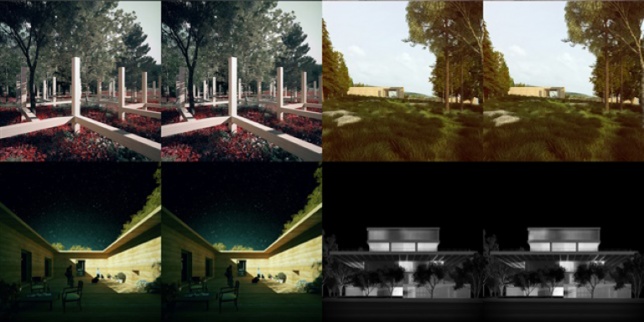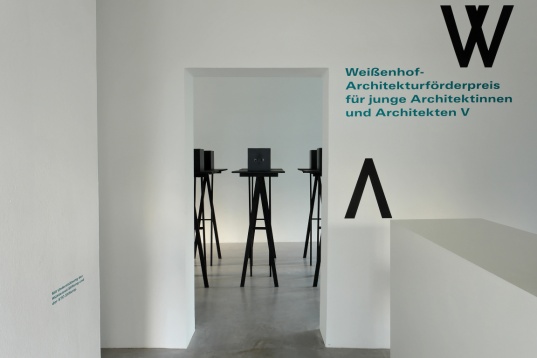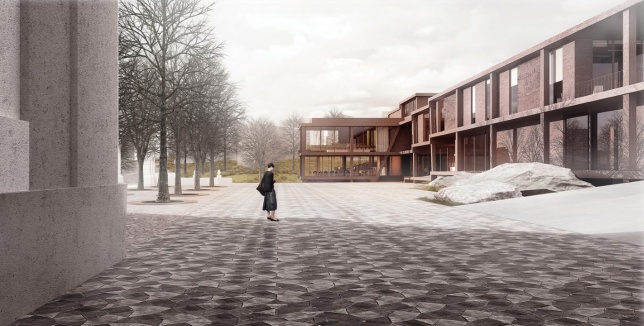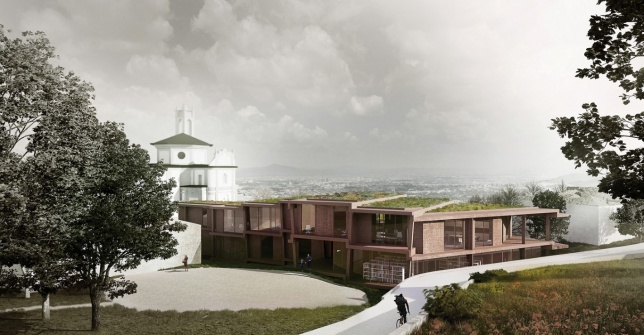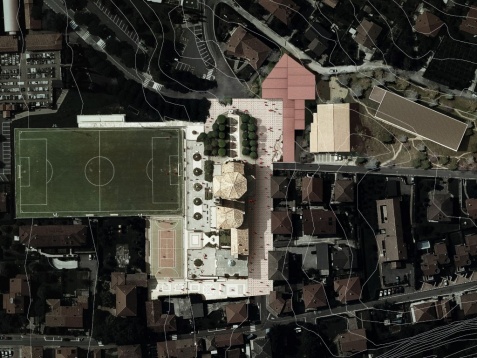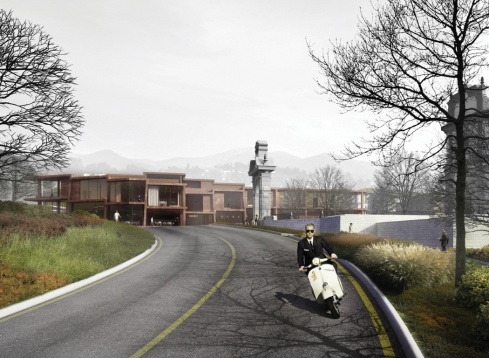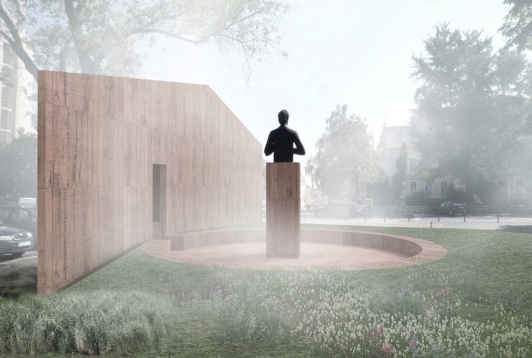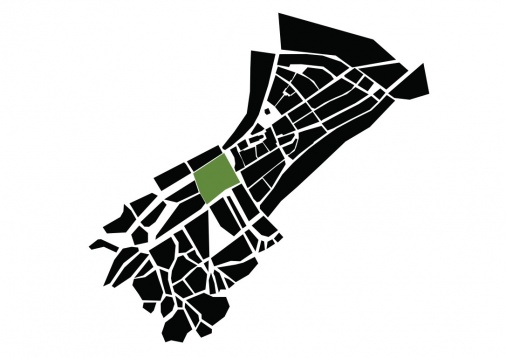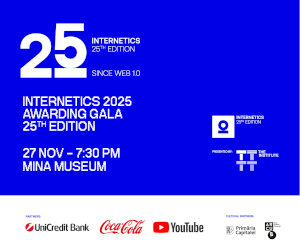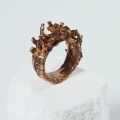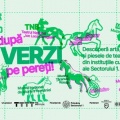HISTORY
UNULAUNU (one to one ,-en) is a young architecture office.They first joined forces in 2010 driven by a simple wish of doing architecture and later they found enough commune and also conflictual points to convince that they should work together. Besides their own projects they've enriched their experience working in offices like: OMA / Rem Koolhaas-Rotterdam / Hong Kong, Christian Kerez- Zürich and Valerio Olgiati-Chur, living and collaborating with offices from Paris, Dubai, Zürich, Oslo, Berlin, Bruxelles and Stuttgart. The first project was the competition and building of the national pavilion of Romania at the Biennale di Architettura of Venice 2010. The success at the prestigious exhibition and the fruitful collaboration gave them the opportunity to start an office.
ROMINA GRILLO was born in 1984 Como, Italia. She studied architecture at Accademia di Architettura di Mendrisio,Switzerland. Romina collaborated with the office Christian Kerez architektbüro - Zürich, worked as teaching assistant of Valerio Olgiati at Accademia di Architettura di Mendrisio, Switzerland and she worked at OMA / Rem Koolhaas in Rotterdam. She is currently a teaching assistant at ETH Zurich in Christian Kerez’s studio. SPECIFIC
They believe that architecture starts to exist only when built, hence the name of their office. They engage in projects that seem interesting to them, regardless of scale, program or place. they had worked on projects from product design to vast master plans. The professional background determined them to invest effort in their ideas, ideas that stand at the very base of any architectural object. Their ambitions focus on the concept design phase. Hence, the future architecture will be definded by qualities that transcend a shallow understanding of the project, thus giving it a timeless aura. They continously test their abilities, until now participating seperatelly or together, in the last 3 years, in over 40 architectural competitions and more than 20 projects in concept design phases.
ROMANIAN DESIGN WEEK APPEARANCES
2015 // THINK INSIDE THE BOX
2014 // TOWN HALL, Cenate Sopra, Italy 2014 // Ciprian Porumbescu, Brașov, România
UNULAUNU (one to one ,-en) is a young architecture office.They first joined forces in 2010 driven by a simple wish of doing architecture and later they found enough commune and also conflictual points to convince that they should work together. Besides their own projects they've enriched their experience working in offices like: OMA / Rem Koolhaas-Rotterdam / Hong Kong, Christian Kerez- Zürich and Valerio Olgiati-Chur, living and collaborating with offices from Paris, Dubai, Zürich, Oslo, Berlin, Bruxelles and Stuttgart. The first project was the competition and building of the national pavilion of Romania at the Biennale di Architettura of Venice 2010. The success at the prestigious exhibition and the fruitful collaboration gave them the opportunity to start an office.
ROMINA GRILLO was born in 1984 Como, Italia. She studied architecture at Accademia di Architettura di Mendrisio,Switzerland. Romina collaborated with the office Christian Kerez architektbüro - Zürich, worked as teaching assistant of Valerio Olgiati at Accademia di Architettura di Mendrisio, Switzerland and she worked at OMA / Rem Koolhaas in Rotterdam. She is currently a teaching assistant at ETH Zurich in Christian Kerez’s studio.
CIPRIAN RĂȘOIU was born in 1986 Brașov, Romania. He studied architecture at the University of Architecture and Urbanism “Ion Mincu” in Bucharest and at the Stuttgart University. Ciprian worked for several architecture offices: Behnisch Architekten - Stuttgart, ReDesign Studio - Bucharest, OMA / Rem Koolhaas – Rotterdam and in 2010 he co-founded UNULAUNU. He currently lives and works in Bucharest, Romania.
LIVIU VASIU was born in 1982 in Târgu-Mureș, Romania and studied architecture at the Accademia di Architettura di Mendrisio, Switzerland. He collaborated with offices around France and Switzerland and worked for two years in Valerio Olgiati’s office in Flims, Switzerland. He is currently living and working in Bucharest.
MATEI VLĂSCEANU was born in 1986 Brasov, Romania. He studied architecture at the University of Architecture and Urbanism “Ion Mincu” in Bucharest and at KU Leuven. He gained experience through collaborations with various studios in Bucharest and recently, by working at OMA/Rem Koolhas – Hong Kong and Rotterdam. In 2010 UNULAUNU was founded, Matei being one of the founding partners. He is currently a teaching assistant at the University of Architecture and Urbanism ION MINCU in Bucharest, Romania.
TUDOR VLĂSCEANU was born in 1981 Brasov, Romania. He studied architecture at the University of Architecture and Urbanism “Ion Mincu” in Bucharest and at TU Delft. Since 2007, he worked for several architecture offices: OMA/Rem Koolhaas - Rotterdam, Graft - Berlin, On Office - Oslo/Dubai, Spacegroup - Oslo. He currently lives and works in Bucharest, Romania.
They believe that architecture starts to exist only when built, hence the name of their office. They engage in projects that seem interesting to them, regardless of scale, program or place. they had worked on projects from product design to vast master plans. The professional background determined them to invest effort in their ideas, ideas that stand at the very base of any architectural object. Their ambitions focus on the concept design phase. Hence, the future architecture will be definded by qualities that transcend a shallow understanding of the project, thus giving it a timeless aura. They continously test their abilities, until now participating seperatelly or together, in the last 3 years, in over 40 architectural competitions and more than 20 projects in concept design phases.
ROMANIAN DESIGN WEEK APPEARANCES
2015 // THINK INSIDE THE BOX
10 projects are presented through the use of imagery. The concept of the exhibition revolves around the idea of the beholder’s share and the fact that each individual formulates an interpretation of their own, from the work exhibited. Moreover, using the stereoscopic effect, the actual body of work takes its true form, only inside the viewers brain. The physical representation of the projects it is merely a vehicle that triggers the mind to go somewhere else. This exhibition could be seen as a metaphor for a way in which we see architecture to really be.
As an answer to the competition topic, they’ve imagined a new public center for the village of Cenate Sopra, Italy. Due to severe surface limitation, their first action was to occupy as much as possible of the buildable area in order to cut out the biggest unnecessary surface. Together with the existing public space of the church and the street, the resulted space would gain the character of a generous and authentic piazza. Given the complex topography of the site and the position of important focusing points like the school, piazza and the church, the new building is developed as a system of platforms that follows the existing terrain and organises the program in a strategic manner. As a result, the new building creates a continuous flowing space made of platforms and pillars. The structure takes advantage of the stair-like system and uses the step as a beam, resulting in an ingenious and simple structural system. Due to its apparently deformed anatomy and its red colour given by the concrete’s pigmentation, the building gains the character of a huge resting animal between the heels of Cenate Sopra.
The space around the statue of Ciprian Porumbescu can’t be seen as a separate part, but only as continuation of the park. In this way the starting premises are: continuation of the green area and resolving the proximity with the parking area and the street close to the park. The wall protects the statue from the mess of the parking and the street creating together with the statue a unique scenography and defining in the same time a clear entrance zone in the park. The structural stability of the concrete wall is achieved by adding an extra thickness in the middle of the wall giving a third dimension to it, making this wall become an object. The wall hides in its thickness a small space transforming it from a simple object into architecture. I theI the middle of the green area, a concrete ring enclose a contemplation space around the sculpture.
















